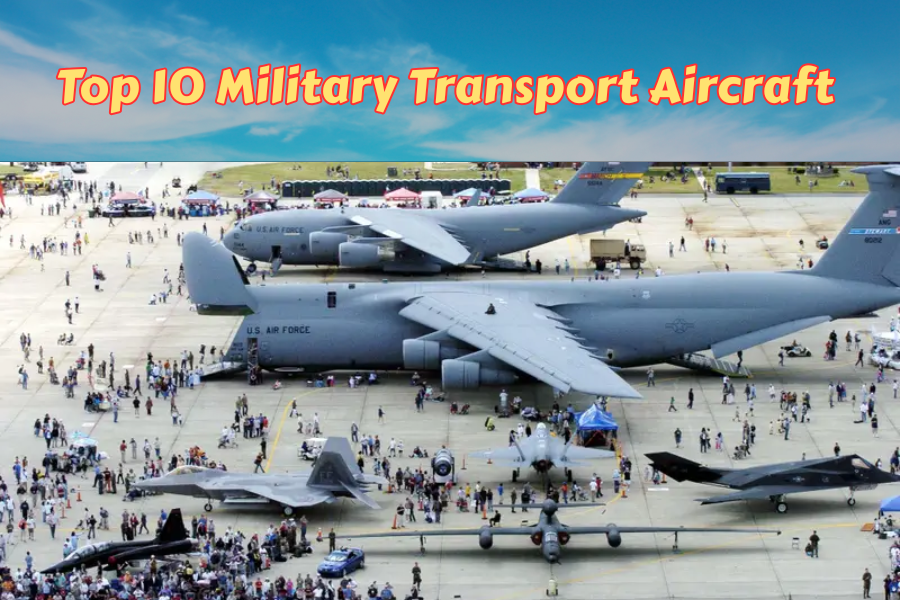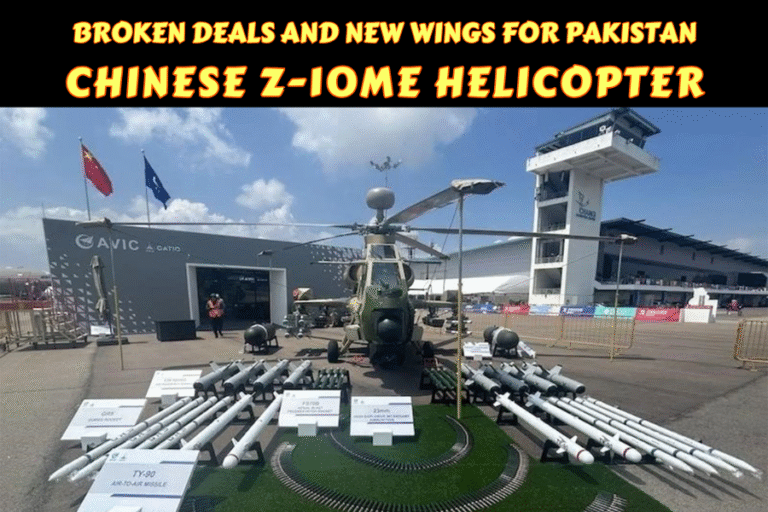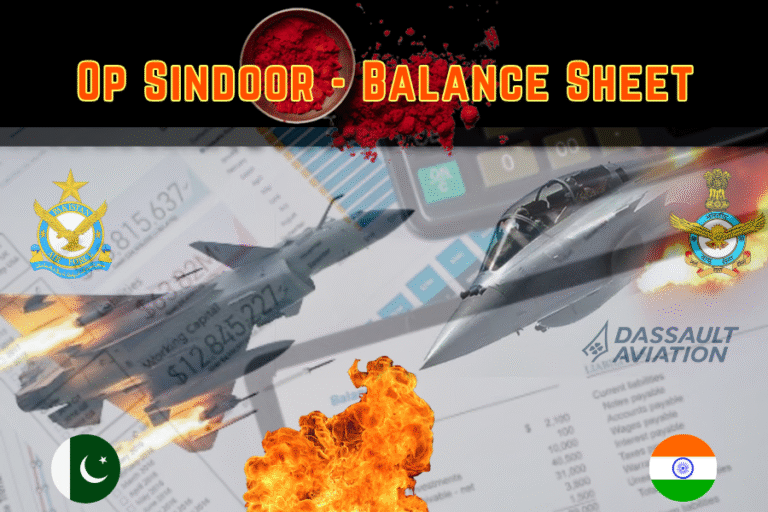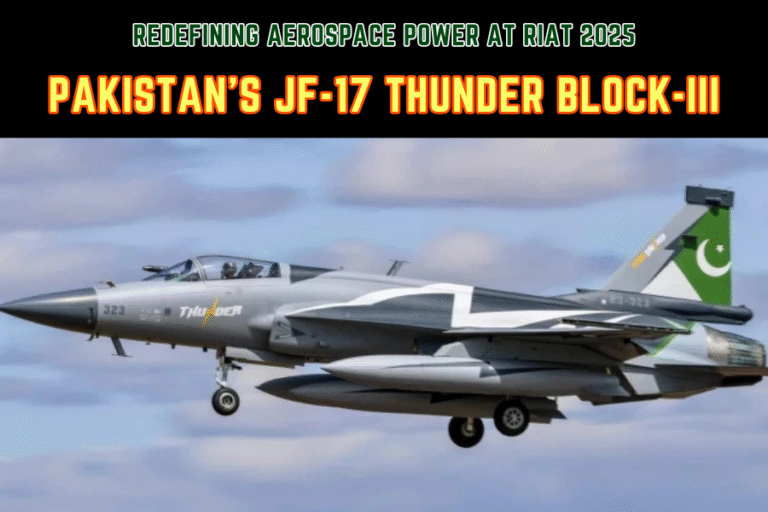(By Khalid Masood)
In the dynamic realm of military logistics, transport aircraft serve as vital lifelines for deploying troops, equipment, and supplies across global theatres. These aircraft provide armed forces with the capability to execute rapid airlifts, humanitarian missions, and strategic operations efficiently. Moreover, they incorporate advanced avionics, robust structures, and powerful engines to handle diverse payloads in challenging environments. As we explore 2025, the top 10 military transport aircraft of the world showcase a blend of historical reliability and modern innovation. For instance, many feature aerial refuelling systems and short takeoff capabilities for enhanced flexibility. Additionally, countries prioritise aircraft that balance payload capacity with operational costs. However, some models face limitations in range or maintenance demands. This article answers queries like “what are the best military transport aircraft in 2025?” or “which models do major countries deploy?” Drawing from defence reports and expert sources, we offer comprehensive insights. Therefore, readers can understand these essential assets.
Military transport aircraft typically carry heavy cargos over long distances, supporting tactical and strategic missions. They feature large cargo bays and ramp loading for quick deployments. Additionally, pilots use advanced navigation systems for precise airdrops. According to analyses, over 5,000 transport aircraft serve globally, with the US leading in fleet size. Meanwhile, Russia excels in heavy-lift models, and Europe focuses on versatile designs. However, Asian nations like China develop indigenous aircraft for self-reliance. Consequently, the top 10 military transport aircraft of the world reflect diverse capabilities. Armed forces in North America, Europe, and Asia utilise them for exercises and conflicts. For example, joint operations demonstrate their interoperability. Overall, these aircraft are indispensable for modern warfare. As threats evolve, upgrades ensure sustained effectiveness. Thus, this list highlights premier models in 2025.
Military transport aircraft have advanced from World War II gliders to today’s jet-powered giants. They prioritise fuel efficiency and payload for extended ranges. Additionally, materials like composites reduce weight without sacrificing strength. Data indicates the market for military transports exceeds £10 billion annually. The C-5 Galaxy dominates heavy lift, while the C-130 Hercules holds versatility records. However, newer models like the Y-20 push boundaries with indigenous tech. Consequently, innovation drives military adoption. Forces use them for troop transport and disaster relief. For instance, in remote areas, they deliver aid swiftly. Overall, these machines are crucial. As 2025 brings hybrid threats, electronic integrations become key. Thus, the top 10 military transport aircraft of the world embody logistical excellence.
1. Lockheed C-5 Galaxy: Pioneering the Top 10 Military Transport Aircraft of the World
The Lockheed C-5 Galaxy traces its origins to the early 1960s. The US Air Force needed a heavy airlifter to replace the C-133 Cargomaster. Moreover, development began under the CX-HLS programme in 1963. Lockheed won the contract in 1965 over Boeing and Douglas. The first prototype rolled out in 1968. Additionally, it made its maiden flight in June 1968. The Galaxy entered service in 1970 with 81 C-5A models produced. However, wing cracks in the 1970s restricted payloads. This led to the C-5B variant in the 1980s, with 50 built. The C-5M Super Galaxy upgrade started in 2006, modernising avionics and engines. The programme completed in 2018, extending service to 2040. Furthermore, it remains the largest US airlifter. Overall, it symbolises American heavy lift capability.
Technical details include a maximum speed of 532 mph. The cruise speed is 518 mph. Moreover, the range is 5,500 miles with payload. The ferry range extends to 8,000 miles. Payload capacity reaches 281,000 pounds. Engines are four General Electric F138 turbofans, each with 51,000 lbf thrust. Dimensions show a length of 247 feet, wingspan of 222 feet, and height of 65 feet. Additionally, the wing area is 6,200 square feet. The empty weight is 381,000 pounds, with maximum takeoff weight at 840,000 pounds. The aircraft features a cargo hold of 143 feet long, 19 feet wide, and 13.5 feet high. This accommodates outsized loads. Furthermore, it has kneeling landing gear for easy loading. Overall, it excels in strategic airlift.
Operators include the United States Air Force with 52 C-5M models. It serves squadrons like the 60th Air Mobility Wing at Travis AFB. Moreover, the 436th Airlift Wing at Dover AFB. The Galaxy supports global missions. Additionally, no foreign operators exist due to export restrictions. The aircraft equips reserve units like the 433rd Airlift Wing. However, all units focus on US operations. Overall, it remains exclusive to American forces.
Pros feature massive payload for heavy equipment transport. It carries tanks and helicopters easily. Moreover, the range allows intercontinental flights without refuelling. The upgraded engines reduce fuel consumption by 22 percent. Additionally, the reliability rate exceeds 75 percent. This ensures mission success. Furthermore, the design supports aerial refuelling. Overall, it provides unmatched strategic lift.
Cons include high maintenance costs due to age. The fleet requires frequent inspections for cracks. Moreover, the size limits runway options in remote areas. The aircraft demands large crews of nine. Additionally, noise levels restrict operations near populations. This affects basing. However, upgrades mitigate some issues. Overall, it needs significant resources.
Notable operations include Vietnam War evacuations in 1975. It airlifted refugees. Moreover, Operation Desert Storm in 1991 transported troops and gear. The Galaxy supported coalition forces. Additionally, it aided Hurricane Katrina relief in 2005. The aircraft delivered supplies. However, a 1974 crash during testing caused fatalities. This highlighted design flaws. Furthermore, it transported Space Shuttle components. Overall, it impacts major events.
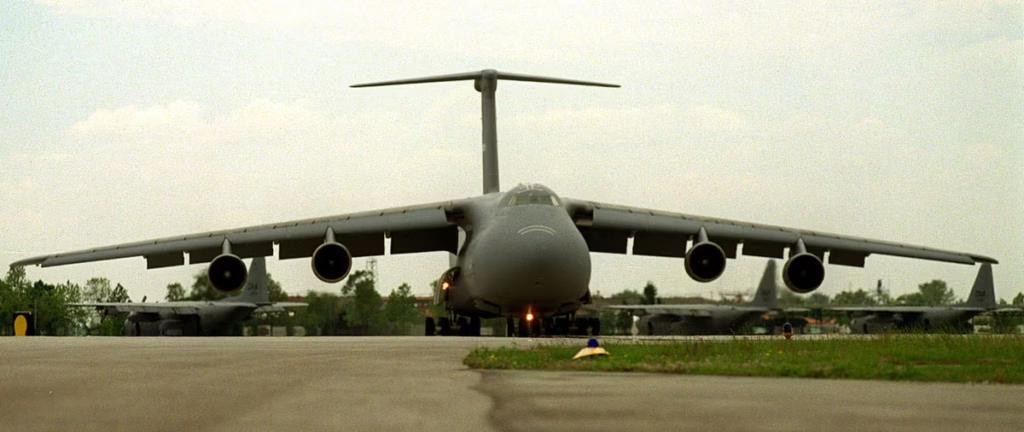
2. Boeing C-17 Globemaster III: Versatile in the Top 10 Military Transport Aircraft of the World
The Boeing C-17 Globemaster III originated in the 1970s as part of the Advanced Medium STOL Transport programme. The US Air Force needed a replacement for the C-141 Starlifter. Moreover, McDonnell Douglas won the contract in 1981. The first prototype flew in 1991. Additionally, it entered service in 1995. The C-17 saw action in Operation Enduring Freedom in 2001. However, production ended in 2015 with 279 units built. This led to talks for restart in 2025. Furthermore, it features reverse thrust for short landings. Overall, it embodies American tactical lift.
Technical details include a cruise speed of 450 knots. The maximum speed is Mach 0.74. Moreover, the range is 2,400 nautical miles with payload. The ferry range extends to 6,230 nautical miles. Payload capacity reaches 170,900 pounds. Engines are four Pratt & Whitney F117 turbofans, each with 40,440 lbf thrust. Dimensions show a length of 174 feet, wingspan of 169 feet, and height of 55 feet. Additionally, the wing area is 3,800 square feet. The empty weight is 282,500 pounds, with maximum takeoff weight at 585,000 pounds. The cargo hold is 88 feet long, 18 feet wide, and 12 feet high. This accommodates 102 troops or 36 litters. Furthermore, it has thrust reversers for steep descents. Overall, it offers flexibility.
Operators include the United States Air Force with 222 units. India has 11 for strategic lift. Moreover, Australia operates 8 for Pacific missions. The United Kingdom has 8 for global operations. Canada deploys 5 for Arctic support. Additionally, Qatar uses 8 for regional aid. The UAE has 8 for logistics. Kuwait operates 2 for defence. NATO’s Heavy Airlift Wing has 3 for shared use. The aircraft supports 10 countries in 2025. However, some fleets are complete. Overall, it equips allied forces.
Pros feature short takeoff from 3,500 feet runways. It operates on unimproved surfaces. Moreover, the range allows transoceanic flights with refuelling. The payload supports 18 pallets or 90 troops. Additionally, the crew of three reduces manpower needs. This lowers costs. Furthermore, the reliability rate is 92 percent. Overall, it provides tactical versatility.
Cons include high acquisition costs of $340 million per unit. The fleet requires extensive maintenance. Moreover, the size limits use on small airfields. The aircraft demands skilled pilots for manoeuvres. Additionally, fuel consumption is high at 8 tons per hour. This affects long missions. However, efficiencies improve with upgrades. Overall, it needs budget support.
Notable operations include Operation Enduring Freedom in 2001. It airlifted supplies to Afghanistan. Moreover, the 2010 Haiti earthquake relief transported aid. The C-17 delivered medical teams. Additionally, it supported the 2011 Libya intervention. The aircraft carried troops. However, a 2010 Alaska crash killed four. This highlighted training risks. Furthermore, it evacuated Kabul in 2021. Overall, it impacts humanitarian and military efforts.
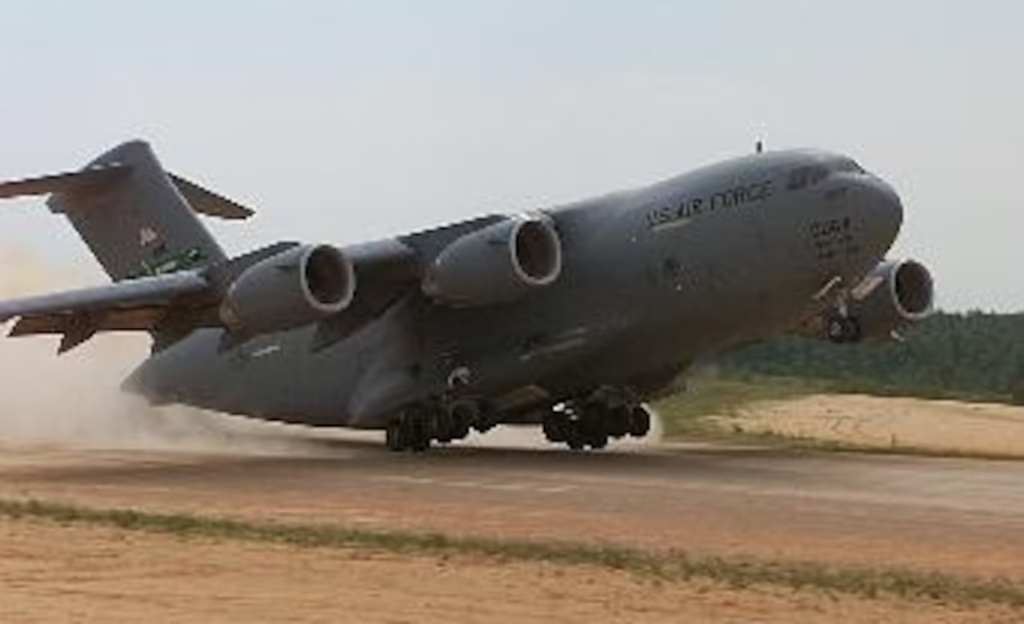
3. Ilyushin Il-76: Enduring in the Top 10 Military Transport Aircraft of the World
The Ilyushin Il-76 originated in the 1960s to replace the An-12. The Soviet Union needed a heavy airlifter for remote areas. Moreover, Ilyushin design bureau led the project. The first flight occurred in 1971. Additionally, it entered service in 1974. The Il-76 saw action in Afghanistan in 1979. However, post-Soviet era led to upgrades like the Il-76MD-90A in 2004. This modernised avionics. Furthermore, production shifted to Ulyanovsk in Russia. Overall, it remains a Soviet legacy.
Technical details include a maximum speed of 559 mph. The cruise speed is 497 mph. Moreover, the range is 2,700 miles with payload. The ferry range extends to 5,000 miles. Payload capacity reaches 132,000 pounds. Engines are four Soloviev D-30 turbofans, each with 26,500 lbf thrust. Dimensions show a length of 152 feet, wingspan of 165 feet, and height of 48 feet. Additionally, the wing area is 3,229 square feet. The empty weight is 200,620 pounds, with maximum takeoff weight at 485,017 pounds. The cargo hold is 65 feet long, 11 feet wide, and 10 feet high. This accommodates 140 troops or 20 pallets. Furthermore, it has thrust reversers for short landings. Overall, it offers versatility.
Operators include Russia with over 100 units. China has 20 for airlift. Moreover, India operates 17 for strategic transport. Ukraine has 20 for defence. Algeria deploys 17 for logistics. Additionally, Belarus uses 10 for operations. The Il-76 equips over 40 countries in 2025. However, some fleets are ageing. Overall, it serves Eastern and African forces.
Pros feature ability to operate from unpaved runways. It handles rough terrains. Moreover, the range allows intercontinental flights. The payload supports heavy machinery. Additionally, the design is rugged for harsh climates. This ensures durability. Furthermore, the cost is low for maintenance. Overall, it provides reliability.
Cons include high fuel consumption. The older models lack efficiency. Moreover, the noise levels are high. The aircraft requires large crews. Additionally, avionics are outdated in earlier variants. This affects navigation. However, upgrades like Il-76MD-90A improve. Overall, it needs modernisation.
Notable operations include the Soviet Afghanistan war in 1979. It airlifted troops. Moreover, the 1991 Gulf War transported supplies. The Il-76 supported coalitions. Additionally, it aided the 2011 Libya conflict. The aircraft delivered aid. However, a 2014 Ukraine crash killed 49. This highlighted risks. Furthermore, it evacuated Kabul in 2021. Overall, it impacts major crises.
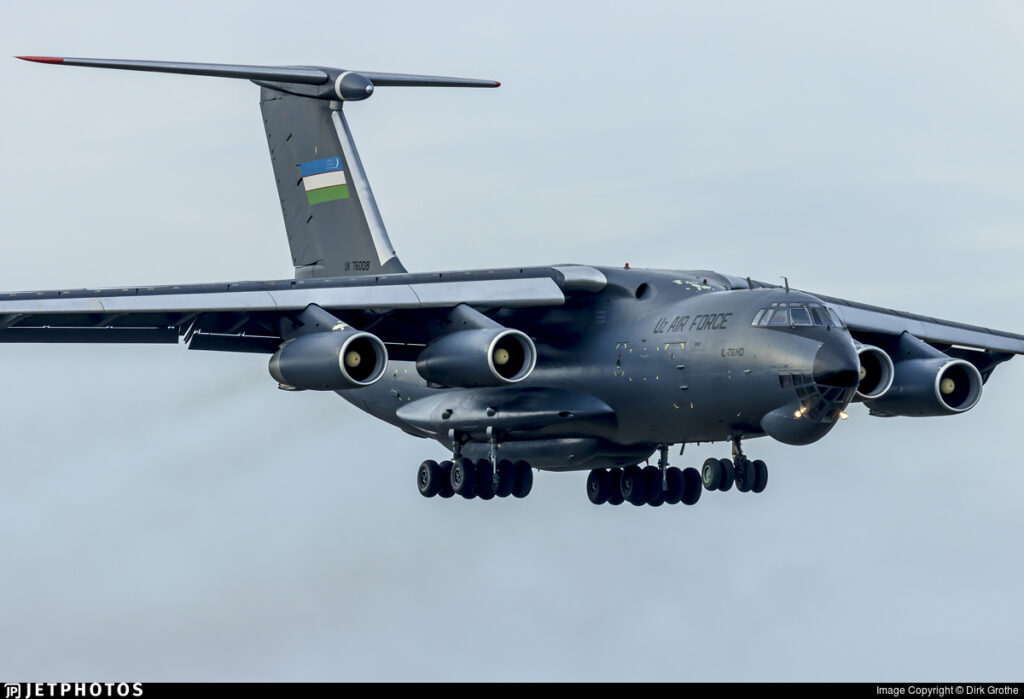
4. Airbus A400M Atlas: Modern in the Top 10 Military Transport Aircraft of the World
The Airbus A400M Atlas originated from the 1982 Future International Military Airlifter programme. It aimed to replace ageing fleets. Moreover, Airbus Military led development. The first flight occurred in 2009. Additionally, it entered service in 2013 with France. The A400M saw action in Mali in 2013. However, a 2015 crash delayed deliveries. This led to investigations. Furthermore, it features turboprop engines for efficiency. Overall, it embodies European collaboration.
Technical details include a cruise speed of 485 mph. The maximum speed is Mach 0.72. Moreover, the range is 2,100 nautical miles with payload. The ferry range extends to 5,400 nautical miles. Payload capacity reaches 81,600 pounds. Engines are four Europrop TP400 turboprops, each with 11,000 hp. Dimensions show a length of 148 feet, wingspan of 139 feet, and height of 48 feet. Additionally, the wing area is 2,384 square feet. The empty weight is 173,283 pounds, with maximum takeoff weight at 310,852 pounds. The cargo hold is 58 feet long, 13 feet wide, and 13 feet high. This accommodates 116 troops or 66 stretchers. Furthermore, it has aerial refuelling capability. Overall, it offers tactical flexibility.
Operators include France with 24 units. Germany has 48 for airlift. Moreover, the United Kingdom operates 22 for global missions. Spain uses 14 for defence. Turkey deploys 10 for logistics. Additionally, Belgium has 7 for operations. Malaysia operates 4 for regional aid. Kazakhstan has 1 in 2025. The A400M equips 9 countries. However, some fleets are incomplete. Overall, it serves NATO allies.
Pros feature short takeoff from rough runways. It operates in unimproved areas. Moreover, the range allows transatlantic flights. The payload supports vehicles and troops. Additionally, the design is efficient with low fuel burn. This reduces costs. Furthermore, the avionics are advanced for navigation. Overall, it provides versatility.
Cons include development delays from technical issues. The costs exceeded budgets. Moreover, the size limits use on small fields. The aircraft demands skilled crews for manoeuvres. Additionally, propeller noise is high. This affects stealth. However, efficiencies improve with experience. Overall, it needs time.
Notable operations include the 2013 Mali intervention. It airlifted supplies. Moreover, the 2015 Paris climate summit transported gear. The A400M supported events. Additionally, it aided the 2021 Afghanistan evacuation. The aircraft carried refugees. However, the 2015 Seville crash killed four. This highlighted safety. Furthermore, it delivered aid to Turkey in 2023. Overall, it impacts humanitarian efforts.
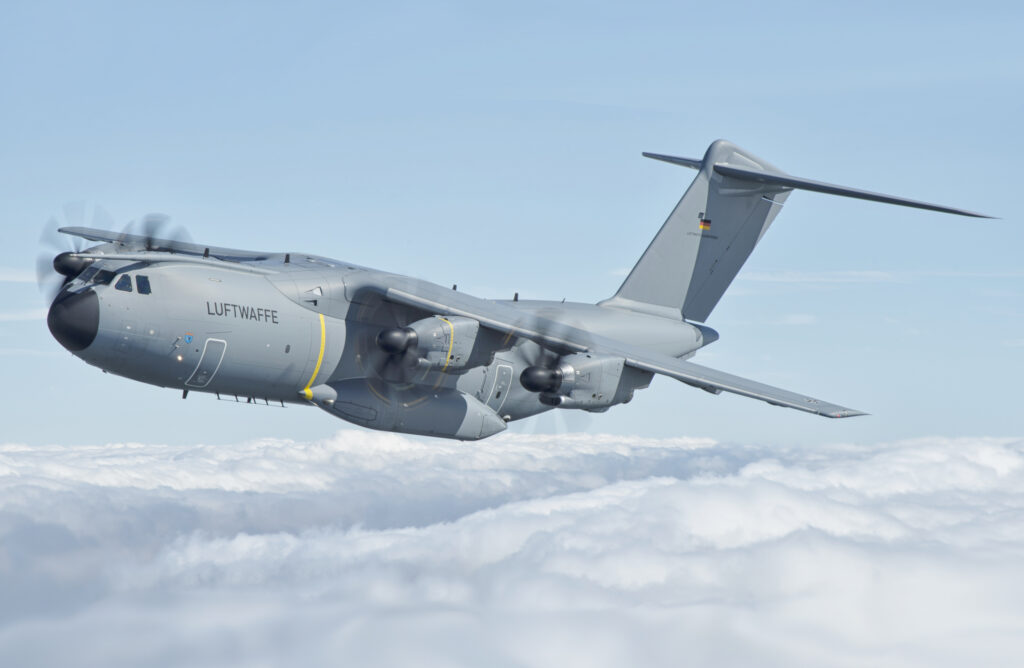
6. Antonov An-124 Ruslan: Heavy Lift in the Top 10 Military Transport Aircraft of the World
The Antonov An-124 Ruslan originated in the 1970s to meet Soviet heavy lift needs. The Antonov bureau designed it. Moreover, the first flight occurred in 1982. Additionally, it entered service in 1986. The An-124 saw action in Afghanistan in 1987. However, post-Soviet era shifted to commercial use. This led to production halt in 2004. Furthermore, Russia plans restart in 2025. Overall, it remains a giant airlifter.
Technical details include a cruise speed of 537 mph. The maximum speed is Mach 0.82. Moreover, the range is 2,300 nautical miles with payload. The ferry range extends to 8,700 nautical miles. Payload capacity reaches 330,000 pounds. Engines are four Progress D-18T turbofans, each with 51,590 lbf thrust. Dimensions show a length of 226 feet, wingspan of 240 feet, and height of 69 feet. Additionally, the wing area is 6,760 square feet. The empty weight is 385,809 pounds, with maximum takeoff weight at 892,872 pounds. The cargo hold is 118 feet long, 21 feet wide, and 14 feet high. This accommodates outsized loads like locomotives. Furthermore, it has onboard cranes for loading. Overall, it offers massive capacity.
Operators include Russia with 26 military units. Ukraine has 7 for commercial. Moreover, Volga-Dnepr operates 12 for cargo. Antonov Airlines uses 7 for heavy lift. Additionally, Maximus Air has 1. The An-124 equips 5 companies in 2025. However, sanctions limit Russian use. Overall, it serves commercial and military.
Pros feature largest payload for heavy equipment. It carries tanks and helicopters. Moreover, the range allows global flights. The design is rugged for unpaved runways. Additionally, the cost is low for operation. This saves money. Furthermore, the crane system speeds loading. Overall, it provides unique lift.
Cons include limited production numbers. The fleet is small. Moreover, the size requires large airfields. The aircraft demands extensive maintenance. Additionally, fuel consumption is high. This affects efficiency. However, upgrades improve. Overall, it needs support.
Notable operations include the 1987 Afghanistan war. It airlifted supplies. Moreover, the 1991 Gulf War transported gear. The An-124 supported coalitions. Additionally, it aided the 2005 Pakistan earthquake relief. The aircraft delivered aid. However, a 1997 Afghanistan crash killed 8. This highlighted risks. Furthermore, it transported Space Station modules. Overall, it impacts major events.
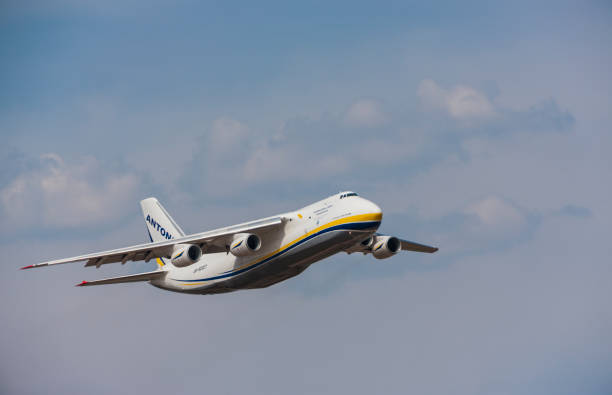
6. Lockheed Martin C-130J Super Hercules: Iconic in the Top 10 Military Transport Aircraft of the World
The Lockheed Martin C-130J Super Hercules originated from the 1950s C-130 series. It aimed to modernise with new engines and avionics. Moreover, the first flight occurred in 1996. Additionally, it entered service in 1999 with the UK. The Super Hercules saw action in Afghanistan in 2001. However, upgrades continue in 2025 for extended life. This led to over 500 deliveries. Furthermore, it features digital cockpit. Overall, it extends a legendary line.
Technical details include a maximum speed of 417 mph. The cruise speed is 400 mph. Moreover, the range is 2,100 nautical miles with payload. The ferry range extends to 4,500 nautical miles. Payload capacity reaches 42,000 pounds. Engines are four Rolls-Royce AE 2100D3 turboprops, each with 4,637 hp. Dimensions show a length of 97 feet, wingspan of 132 feet, and height of 38 feet. Additionally, the wing area is 1,745 square feet. The empty weight is 75,800 pounds, with maximum takeoff weight at 155,000 pounds. The cargo hold is 41 feet long, 10 feet wide, and 9 feet high. This accommodates 92 passengers or 64 paratroopers. Furthermore, it has thrust reversers for short landings. Overall, it offers tactical flexibility.
Operators include the US Air Force with 300 units. India has 12 for airlift. Moreover, the United Kingdom operates 14 for operations. Australia uses 12 for Pacific missions. Canada deploys 17 for Arctic support. Additionally, France has 4 for special forces. The C-130J equips over 20 countries in 2025. However, some fleets are expanding. Overall, it serves NATO and allies.
Pros feature short takeoff from unpaved runways. It operates in remote areas. Moreover, the range allows transcontinental flights. The payload supports troops and vehicles. Additionally, the design is efficient with low fuel burn. This reduces costs. Furthermore, the avionics are advanced for navigation. Overall, it provides versatility.
Cons include limited speed compared to jets. The turboprop engines are slower. Moreover, the size restricts use on very small fields. The aircraft demands regular maintenance. Additionally, noise levels are high. This affects stealth. However, efficiencies improve with new variants. Overall, it needs updates.
Notable operations include the 2001 Afghanistan war. It airlifted supplies. Moreover, the 2010 Haiti earthquake relief transported aid. The C-130J delivered medical teams. Additionally, it supported the 2011 Libya intervention. The aircraft carried troops. However, a 2014 India crash killed five. This highlighted safety. Furthermore, it evacuated Kabul in 2021. Overall, it impacts humanitarian and military efforts.
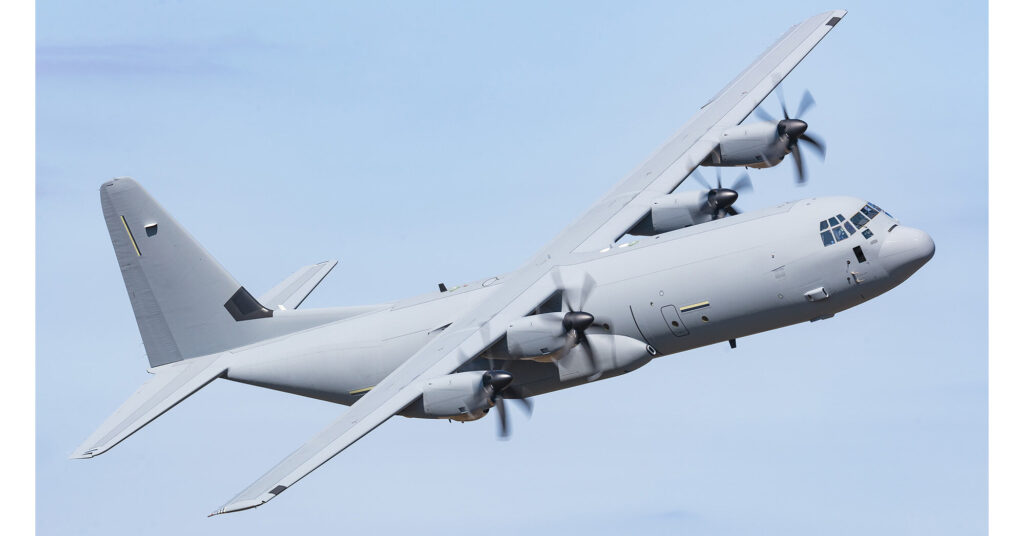
7. Xi’an Y-20: Emerging in the Top 10 Military Transport Aircraft of the World
The Xi’an Y-20 originated in the 2000s to boost China’s airlift capability. The Xi’an Aircraft Industrial Corporation led development. Moreover, the first flight occurred in 2013. Additionally, it entered service in 2016. The Y-20 saw action in COVID-19 relief in 2020. However, upgrades to Y-20B with WS-20 engines occurred in 2024. This improved thrust. Furthermore, it features a wider fuselage. Overall, it symbolises Chinese progress.
Technical details include a maximum speed of 575 mph. The cruise speed is 390 mph. Moreover, the range is 4,800 miles with payload. The ferry range extends to 6,200 miles. Payload capacity reaches 145,505 pounds. Engines are four WS-20 turbofans, each with 31,000 lbf thrust. Dimensions show a length of 154 feet, wingspan of 164 feet, and height of 49 feet. Additionally, the wing area is not specified. The empty weight is 220,462 pounds, with maximum takeoff weight at 485,017 pounds. The cargo hold holds 2 Type 15 tanks. This accommodates heavy loads. Furthermore, it has aerial refuelling. Overall, it offers strategic lift.
Operators include China’s PLAAF with 80 units. No other countries in 2025. Moreover, the Y-20 supports domestic missions. The aircraft equips air wings. Additionally, variants like YY-20 for tankers exist. The fleet is expanding. However, exports are not reported. Overall, it serves Chinese forces.
Pros feature high payload for tanks. It transports heavy gear. Moreover, the range allows regional flights. The design is modern with 3D printing. Additionally, the cost is competitive. This reduces expenses. Furthermore, the avionics are advanced for navigation. Overall, it provides capability.
Cons include limited production numbers. The fleet is small. Moreover, the engines were imported earlier. The aircraft demands further testing. Additionally, fuel efficiency is lower than jets. This affects long missions. However, domestic engines improve. Overall, it needs scale.
Notable operations include the 2020 COVID relief. It airlifted medical staff. Moreover, the 2022 Afghanistan aid delivered supplies. The Y-20 supported humanitarian. Additionally, it aided the 2022 earthquake in Afghanistan. The aircraft carried aid. However, no major military conflicts. This limits data. Furthermore, joint exercises showed potential. Overall, it impacts aid efforts.
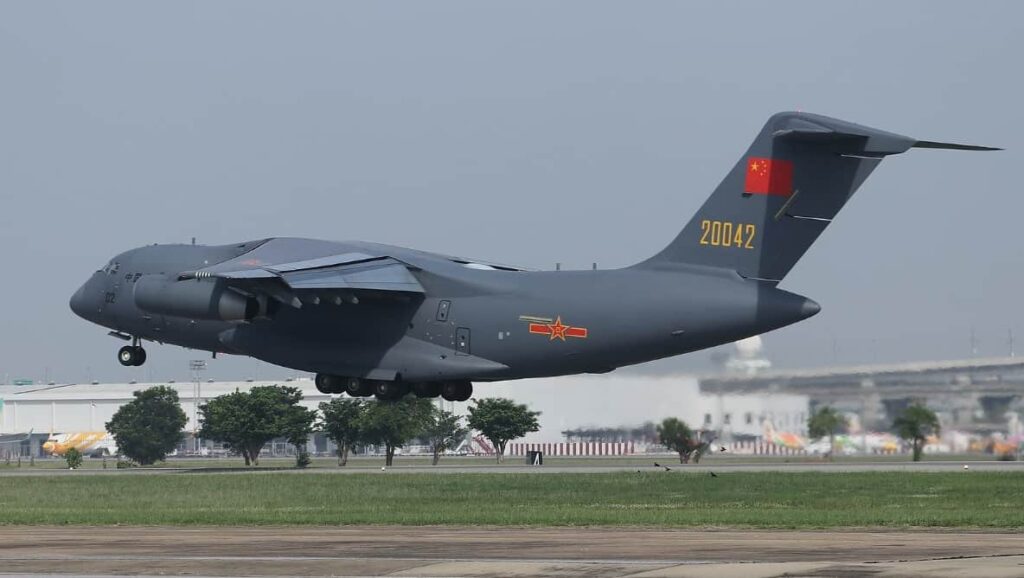
8. Kawasaki C-2: Efficient in the Top 10 Military Transport Aircraft of the World
The Kawasaki C-2 originated in the 2000s to replace the C-1. Japan needed a larger airlifter. Moreover, Kawasaki Aerospace led development. The first flight occurred in 2010. Additionally, it entered service in 2016. The C-2 saw action in Djibouti in 2017. However, production ramps in 2025. This led to 14 units. Furthermore, it features twin engines. Overall, it represents Japanese innovation.
Technical details include a maximum speed of 570 mph. The cruise speed is 550 mph. Moreover, the range is 4,700 miles. The ferry range extends to 6,100 miles. Payload capacity reaches 83,000 pounds. Engines are two General Electric CF6 turbofans, each with 59,740 lbf thrust. Dimensions show a length of 144 feet, wingspan of 145 feet, and height of 46 feet. Additionally, the wing area is not specified. The empty weight is 152,119 pounds, with maximum takeoff weight at 311,734 pounds. The cargo hold holds heavy loads. This accommodates vehicles. Furthermore, it has short takeoff. Overall, it offers speed.
Operators include Japan’s JASDF with 14 units. No other countries in 2025. Moreover, the C-2 supports domestic missions. The aircraft equips air wings. Additionally, RC-2 variant for intelligence exists. The fleet is small. However, production increases. Overall, it serves Japanese forces.
Pros feature high speed for quick deployments. It transports faster than turboprops. Moreover, the range allows Pacific operations. The payload supports troops and gear. Additionally, the design is advanced with fly-by-wire. This reduces pilot load. Furthermore, the avionics are modern for navigation. Overall, it provides efficiency.
Cons include limited fleet numbers. The production is slow. Moreover, the size restricts use on small runways. The aircraft demands high maintenance. Additionally, cost is high for acquisition. This affects expansion. However, domestic production improves. Overall, it needs more units.
Notable operations include the 2017 Djibouti mission. It airlifted supplies. Moreover, the 2021 Afghanistan evacuation transported aid. The C-2 supported efforts. Additionally, it aided Vanuatu relief. The aircraft delivered gear. However, no major conflicts. This limits data. Furthermore, exercises showed potential. Overall, it impacts operations.
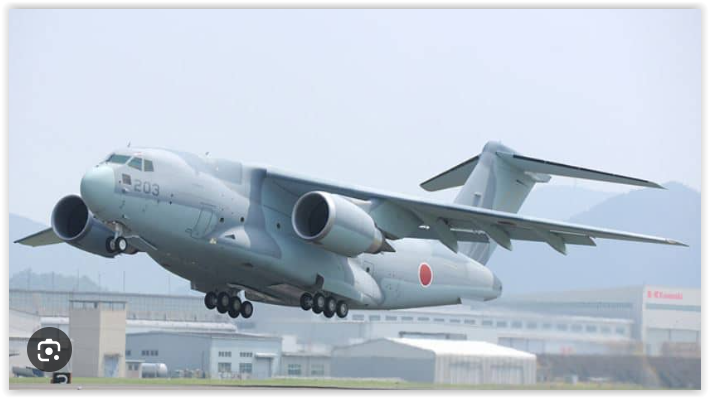
9. Embraer KC-390: Rising in the Top 10 Military Transport Aircraft of the World
The Embraer KC-390 originated in the 2000s to compete with the C-130. Brazil needed a multi-role airlifter. Moreover, Embraer led development. The first flight occurred in 2015. Additionally, it entered service in 2019 with Brazil. The KC-390 saw action in Antarctica in 2020. However, production ramps in 2025. This led to 28 units. Furthermore, it features jet engines. Overall, it represents Brazilian innovation.
Technical details include a maximum speed of 614 mph. The cruise speed is 540 mph. Moreover, the range is 3,120 miles with payload. The ferry range extends to 5,400 miles. Payload capacity reaches 57,000 pounds. Engines are two IAE V2500 turbofans, each with 31,330 lbf thrust. Dimensions show a length of 115 feet, wingspan of 115 feet, and height of 38 feet. Additionally, the wing area is not specified. The empty weight is 111,300 pounds, with maximum takeoff weight at 191,797 pounds. The cargo hold holds 80 troops or 74 litters. This accommodates medical evacuations. Furthermore, it has aerial refuelling. Overall, it offers versatility.
Operators include Brazil with 19 units. Hungary has 2 for airlift. Moreover, Portugal operates 5 for missions. The Netherlands has 5 for logistics. South Korea deploys 3 for defence. Additionally, Czech Republic has 2 in 2025. The KC-390 equips 8 countries. However, some are pending delivery. Overall, it serves emerging markets.
Pros feature high speed for quick responses. It transports faster than turboprops. Moreover, the range allows regional flights. The payload supports troops and vehicles. Additionally, the design is efficient with low fuel. This reduces costs. Furthermore, the avionics are advanced for navigation. Overall, it provides multi-role capability.
Cons include limited production experience. The fleet is small. Moreover, the size restricts use on rough runways. The aircraft demands modern maintenance. Additionally, cost is high for initial buy. This affects adoption. However, economies improve with scale. Overall, it needs time.
Notable operations include the 2020 Antarctica mission. It airlifted supplies. Moreover, the 2022 Brazil flood relief transported aid. The KC-390 delivered gear. Additionally, it aided humanitarian in Hungary. The aircraft supported efforts. However, no major military conflicts. This limits data. Furthermore, exercises showed potential. Overall, it impacts aid.
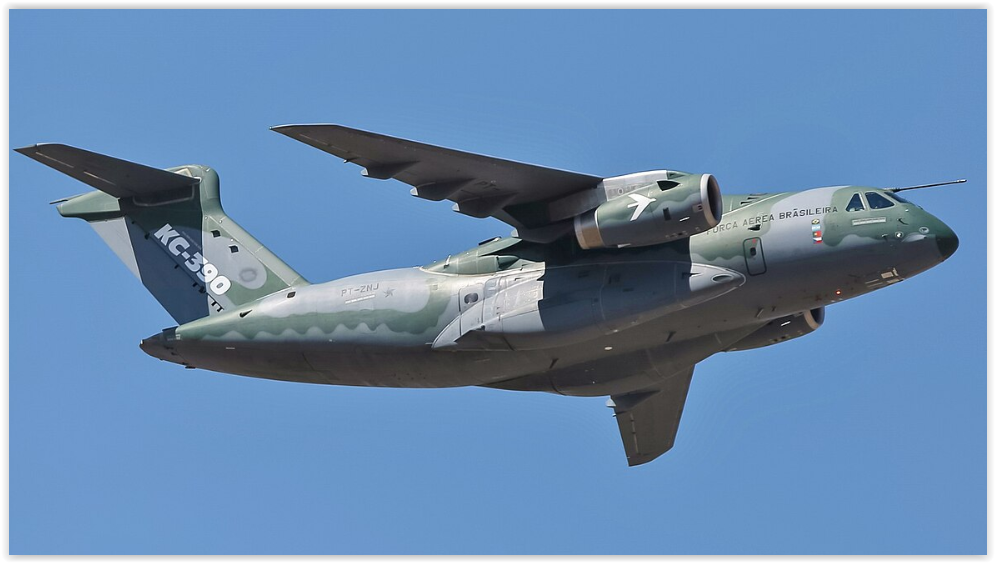
10. Alenia C-27J Spartan: Compact in the Top 10 Military Transport Aircraft of the World
The Alenia C-27J Spartan originated from the 1970s G.222. It aimed to upgrade with C-130J systems. Moreover, Leonardo led development. The first flight occurred in 1999. Additionally, it entered service in 2006 with Italy. The Spartan saw action in Afghanistan in 2008. However, US retirement in 2012 led to reassignments. This affected numbers. Furthermore, it features turboprop engines. Overall, it represents Italian versatility.
Technical details include a maximum speed of 374 mph. The cruise speed is 362 mph. Moreover, the range is 1,093 nautical miles with payload. The ferry range extends to 3,636 nautical miles. Payload capacity reaches 24,912 pounds. Engines are two Rolls-Royce AE 2100-D2A turboprops, each with 4,637 hp. Dimensions show a length of 74 feet, wingspan of 94 feet, and height of 31 feet. Additionally, the wing area is 880 square feet. The empty weight is 38,581 pounds, with maximum takeoff weight at 71,650 pounds. The cargo hold holds 60 troops or 46 paratroopers. This accommodates medical evacuations. Furthermore, it has short takeoff. Overall, it offers tactical lift.
Operators include Italy with 12 units. Australia has 10 for support. Moreover, Bulgaria operates 3 for missions. Greece uses 8 for logistics. The US Coast Guard has 14 for defence. Additionally, Kenya has 3 in 2025. The C-27J equips 20 countries. However, some are limited. Overall, it serves NATO and allies.
Pros feature short takeoff from unimproved runways. It operates in remote areas. Moreover, the range allows regional flights. The payload supports troops and gear. Additionally, the design is efficient with low fuel. This reduces costs. Furthermore, the avionics are modern for navigation. Overall, it provides versatility.
Cons include limited payload for heavy loads. The turboprop engines are slower. Moreover, the size restricts use on very small fields. The aircraft demands regular maintenance. Additionally, noise levels are high. This affects stealth. However, efficiencies improve with new variants. Overall, it needs updates.
Notable operations include the 2008 Afghanistan war. It airlifted supplies. Moreover, the 2011 Libya intervention transported gear. The C-27J supported efforts. Additionally, it aided hurricane relief in the US. The aircraft delivered aid. However, no major incidents reported. This shows reliability. Furthermore, NATO exercises showed potential. Overall, it impacts operations.
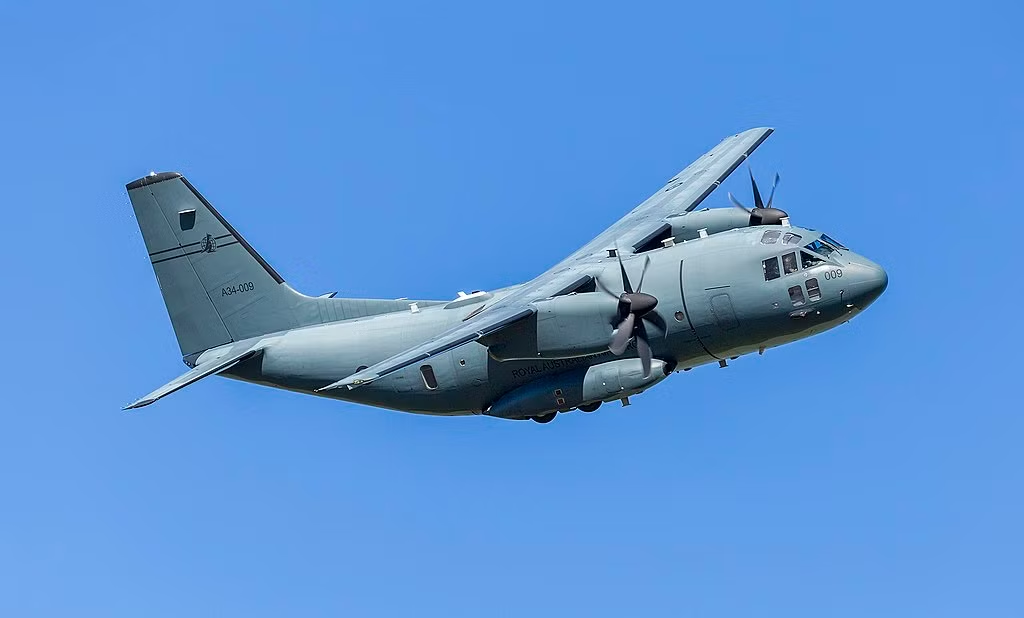
Conclusion:
From the Lockheed C-5 Galaxy to the Alenia C-27J Spartan, these top 10 military transport aircraft of the world illustrate aviation evolution. In 2025, models like the Boeing C-17 lead in versatility, while the Antonov An-124 excels in heavy lift. Moreover, aircraft adapt to humanitarian needs with upgrades. However, challenges like costs persist. Therefore, understanding top 10 military transport aircraft of the world reveals trends. As warfare evolves, innovations in efficiency will shape future. Additionally, global adoption grows with exports. The future holds unmanned variants and hybrid designs. This transforms logistics. Overall, these aircraft remain vital for armed forces.

